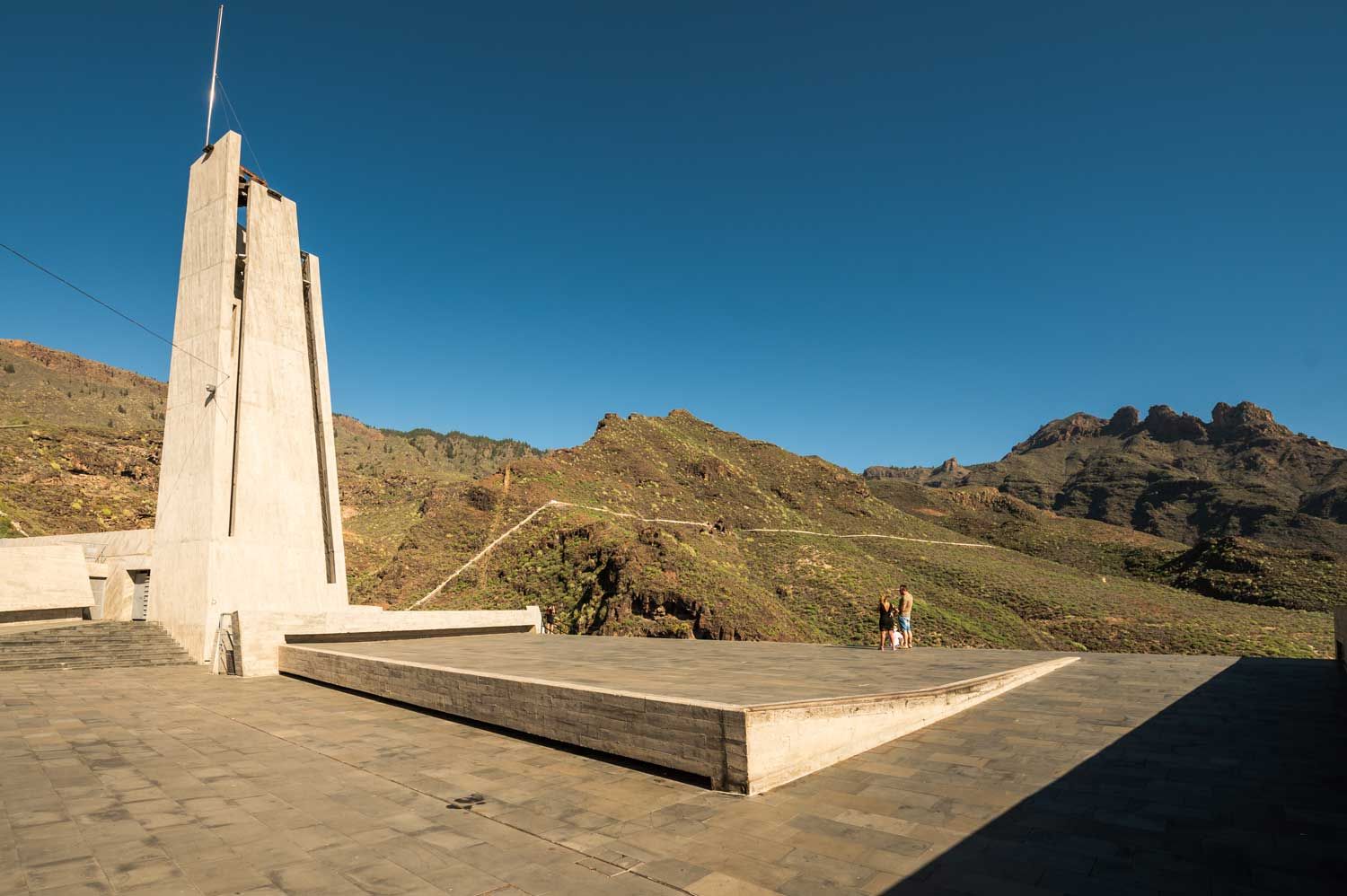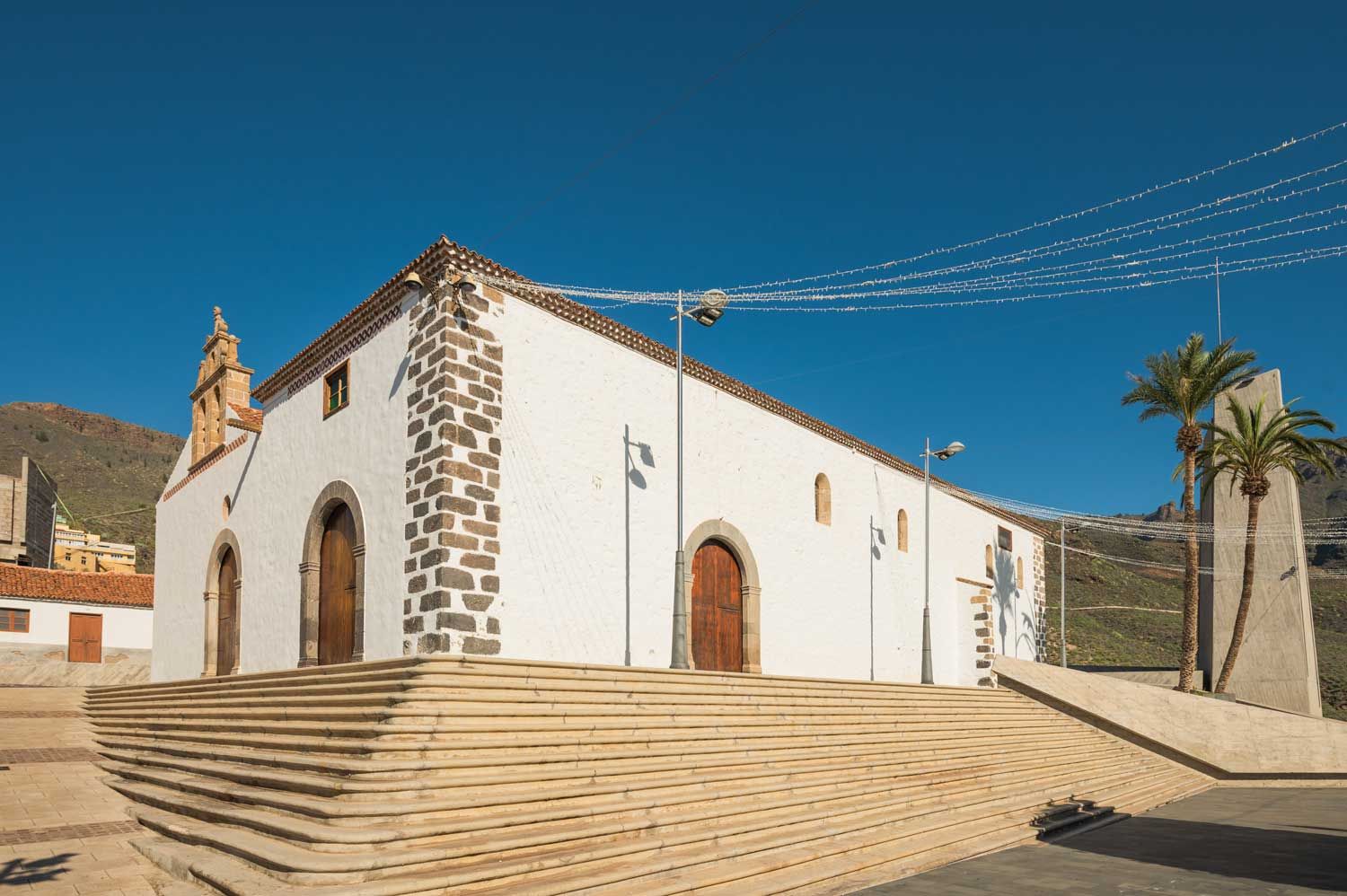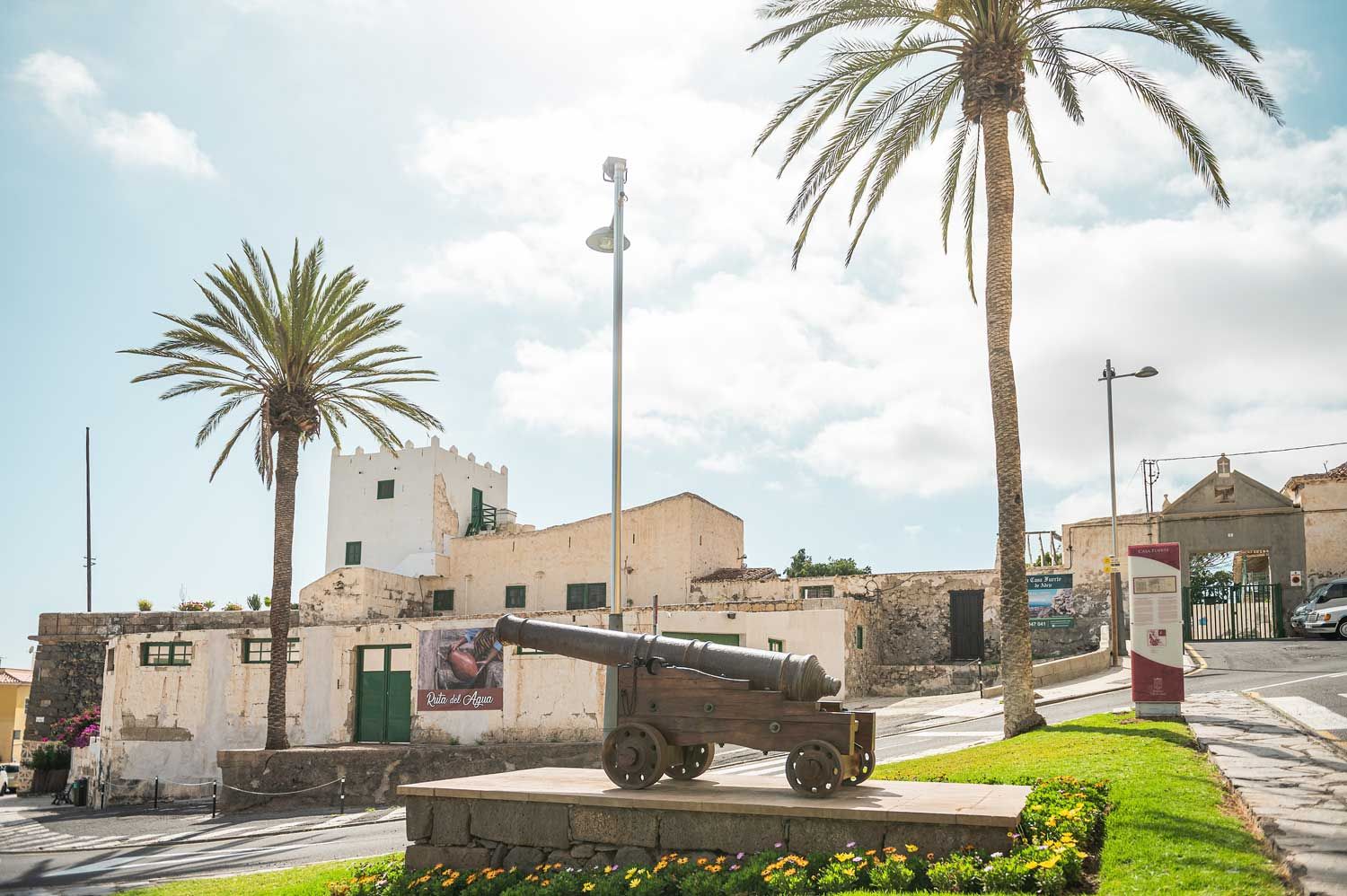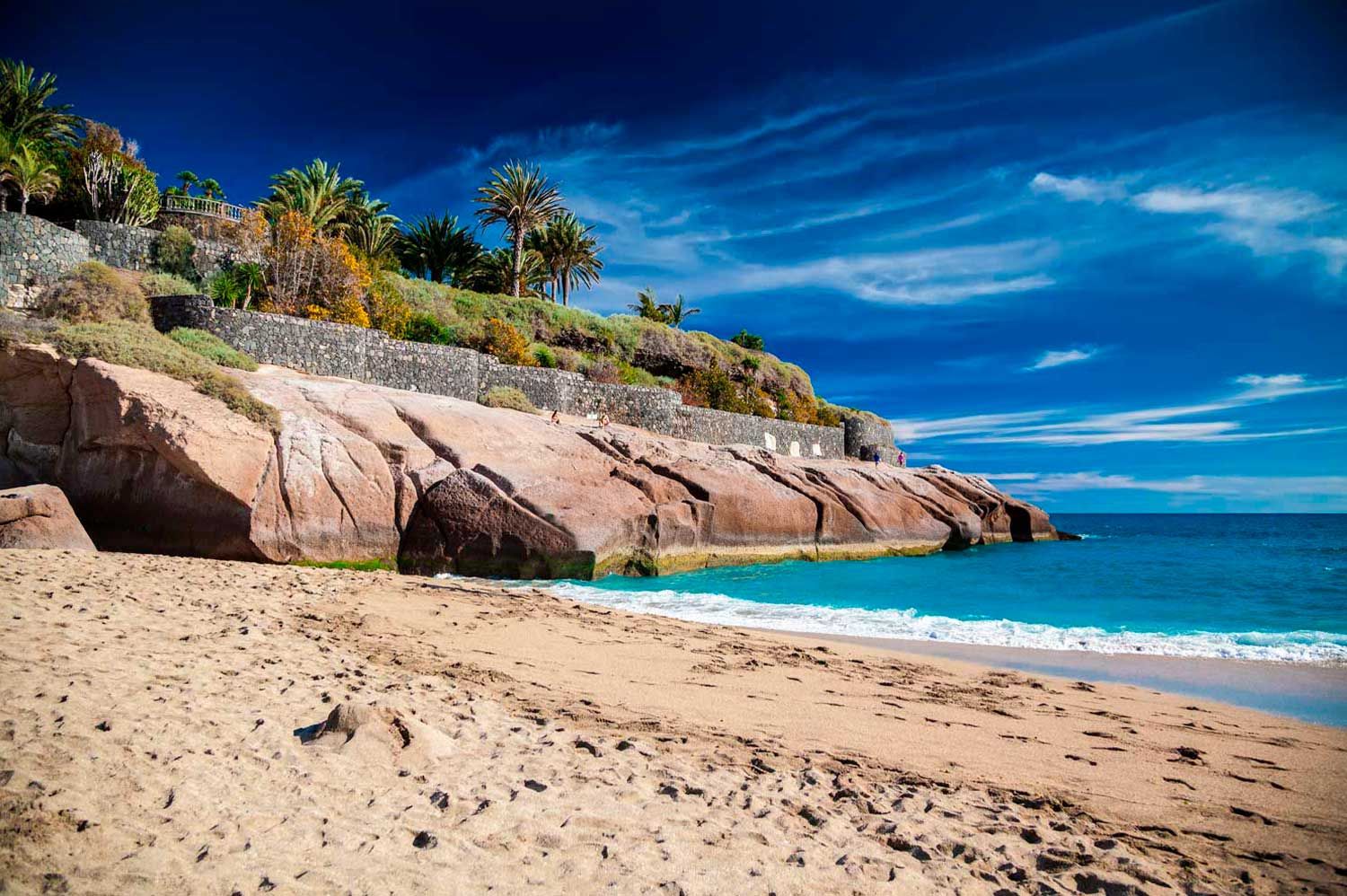Adeje
The town of Adeje has a rich historical past dating back to the pre-Conquest period. A great example of the legacy it has received from previous generations is its historic quarter where you will find important architectural monuments such as La Casa Fuerte or the Church of Santa Úrsula.
The Barranco del Infierno (Hell’s Gorge), protected as a Special Nature Reserve since 1994, is also one of the most important natural landscapes. Recently, the municipality’s coastline has undergone significant development.
Known as Costa Adeje, it offers a wide range of leisure, nature, relaxing and sporting activities to choose from. Adeje also has 14 beaches with sand of all colours where you can swim all year round thanks to its average annual temperature of 24ºC and its almost 300 days of sunshine a year.
There are a number of small supermarkets and shops in the heart of the village. Most of them are local shops with affordable prices, such as bakeries, small supermarkets, cafés, shops, banks and hairdressers.
If you prefer, there are also large supermarkets within a short drive. We recommend Mercadona, Hiperdino, Lidl or Tú Trébol, which are less than 10 minutes’ drive from our apartments and offer free parking. Opening hours: from 9 a.m. to 9 p.m.
What to do in Adeje?
In Adeje you will find the perfect blend of luxury and beautiful natural wonders of the island. Don’t miss this perfect combination and come explore every corner of this place.
Costa Adeje is the destination in the south of the island where uniqueness and good weather are guaranteed. Stroll along its shopping areas, packed with international boutiques or visit Siam Park and enjoy its impressive water slides.
And what better way to fully enjoy the splendour of the sea than going on a boat trip and discovering the species of cetaceans that inhabit the waters of Tenerife, including whales and dolphins that live free in their natural habitat, or going scuba diving and exploring the beauty of the ocean. The warm temperatures of the island are perfect for trying out water activities and sunbathing on the sandy beaches of this municipality.

Plaza de España
The Plaza de España square, remodelled in 2011, has always been and still is a place for gatherings, resting, playing and celebrating for the local people of Adeje. Two of the most important sites declared Assets of Cultural Interest, -the Church of Santa Úrsula and its convent-, flank its entrance, which overlooks the Barranco del Infierno Natural Landscape.

Santa Ursula Church
This building was declared an Asset of Cultural Interest on 7 February 1986 in the category of Artistic-Historical Monument. This church has two naves that were built in different periods. The Mudejar-style ceiling, the sgraffito decorations in the upper area of some of its external parameters, and the idol that crowns the belfry, popularly known as the Head of Juan Centeno, are some of its most notable features.

Casa Fuerte
This building was declared an Asset of Cultural Interest on 7 February 1986 in the category of Artistic-Historical Monument. Its construction began in 1555, commissioned by Pedro de Ponte, with the aim of defending the area from the attacks of English and French pirates. In 1655, it became the seat of the manorial courts, entrusted to Juan Bautista de Ponte Fonte y Pagés, the first lord and Marquis of Adeje.
The Old Chapel of San Sebastián
This old chapel goes by two other names: Ermita de la Encarnación (which literally translates as the Hermitage of the Incarnation) and the Ermita de La Enramada (literally, the Hermitage of the Arbour), because this is where the image of the Virgin of the Incarnation that appeared on the La Enramada Beach was deposited and venerated. This primitive hermitage was built at the beginning of the 16th century but Pedro de Ponte had it rebuilt in 1558.
Church of the Convent of Our Lady of Guadalupe
This building was declared an Asset of Cultural Interest on 7 February 1986 in the category of Artistic-Historical Monument. The church has a rectangular base and is comprised of the main nave and the main chapel. To enter, you must pass through a stone triumphal arch supported by stone columns topped with Corinthian capitals beneath a Baroque entablature. Two of its most notable features are the coffered ceiling, made from Canary Island pine wood (known as tea), and the coat of arms of Juan Bautista de Ponte Fonte y Pagés, framed in marble on a Baroque moulding over the main door leading to the street.
The Water Mill
Near the beginning of the trail along the Barranco del Infierno (Hell’s Gorge), there is a water mill known as Molino Viejo (Old Mill). The mill used the water of the gorge that flowed through the canal, which was built in the first half of the 16th century. The mill is also believed to date from around that time.


Magma Arte & Congresos
An avant-garde architectural project that evokes the essence of the earth, imbued with lava and volcano. Its interwoven surfaces, volumes and textures echo the bowels of the island of Tenerife. This extraordinary space serves as a venue for cultural activities such as exhibitions, classical concerts, theatre and opera.


Beaches in Adeje
This is one of the favourite beach destinations on the island of Tenerife, with an average temperature of 26ºC during the summer months, and a varied offer of cultural, gastronomic and sporting activities. Costa Adeje is packed with an array of stunning beaches, most of which have white or grey sand, and some are even joined together. If you are looking for a relaxing peaceful holiday with good weather no matter what time of the year, then look no further and make sure to visit this part of the island.
Here is a selection of the best beaches in Tenerife, both inside and outside Adeje.